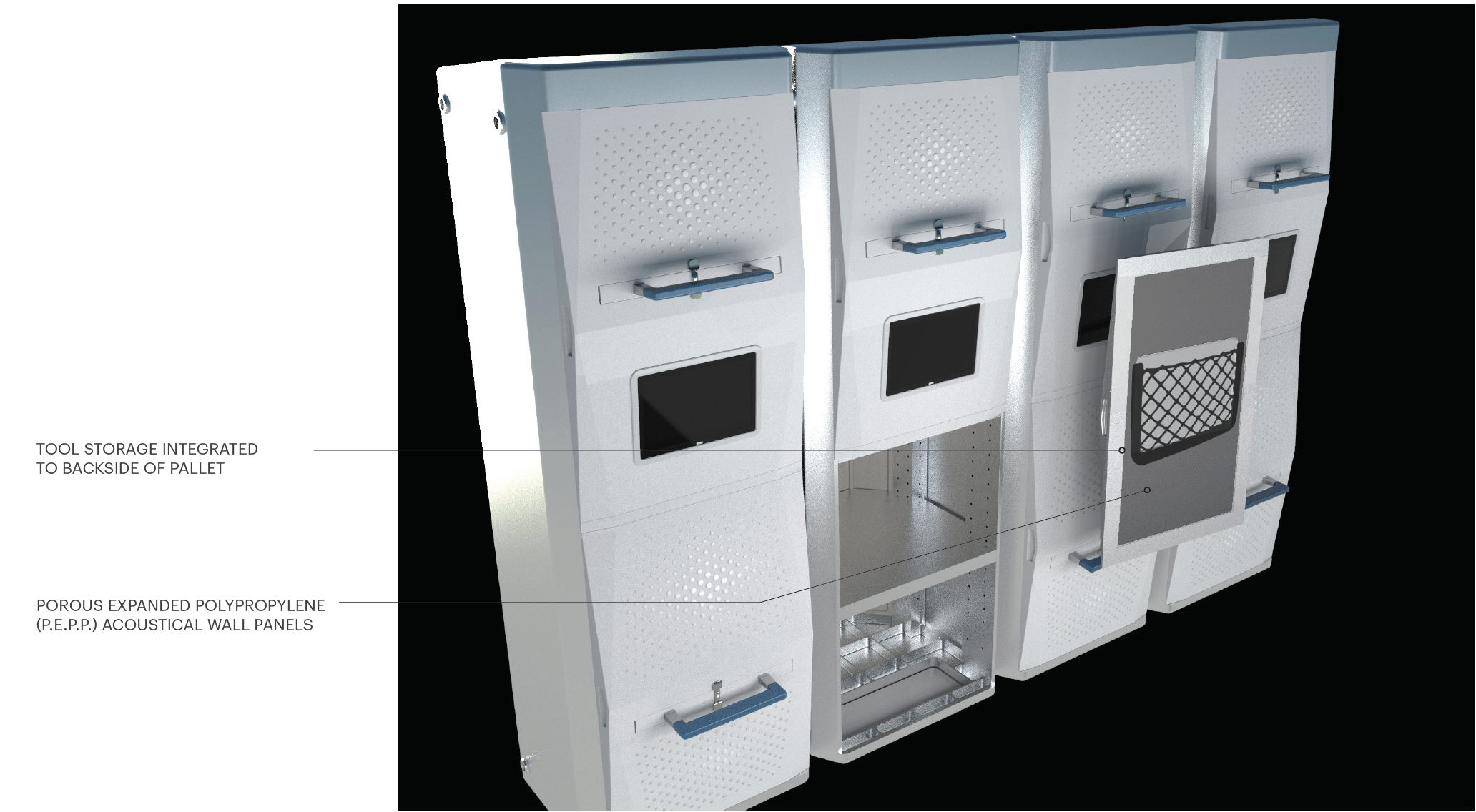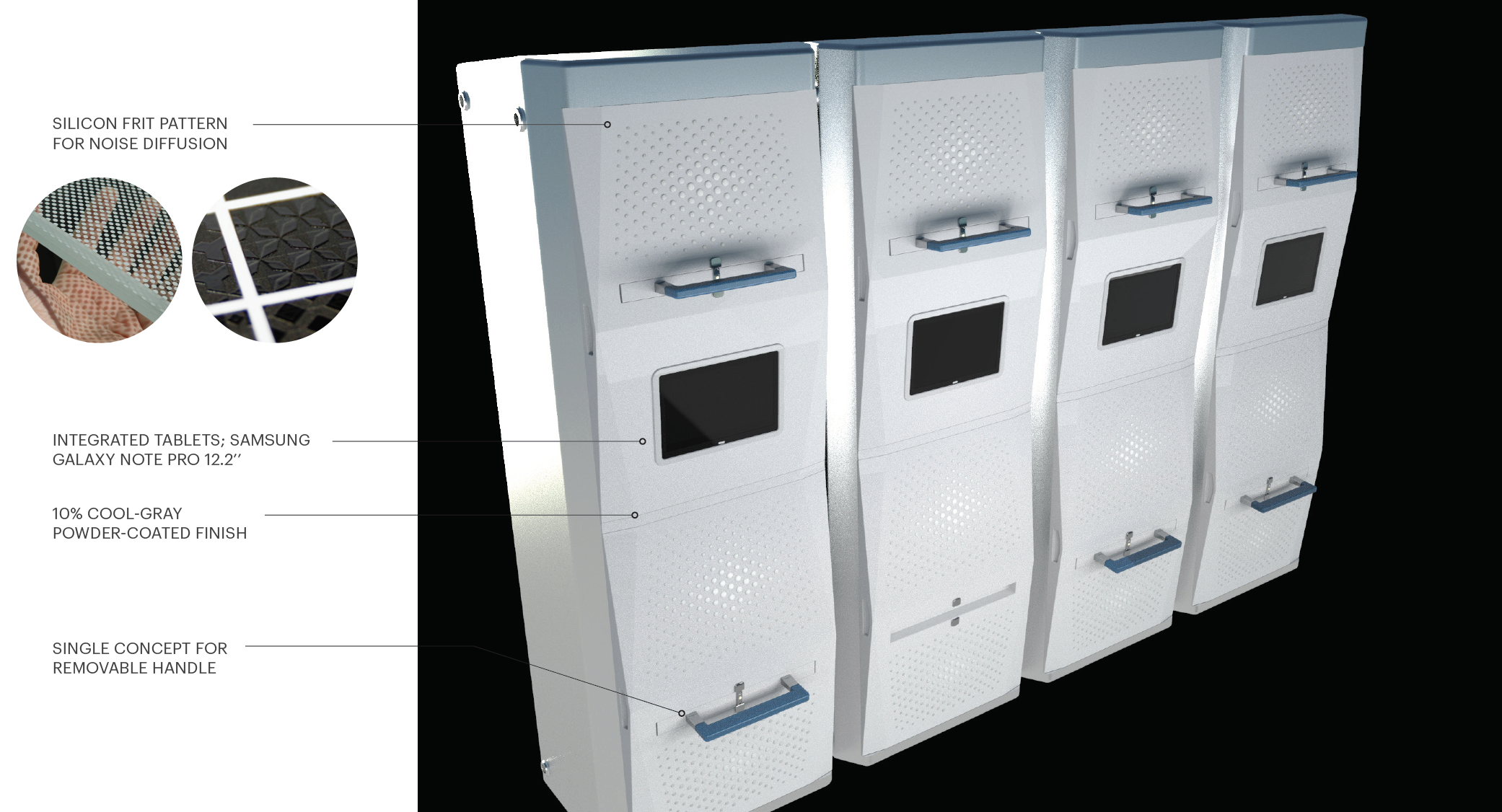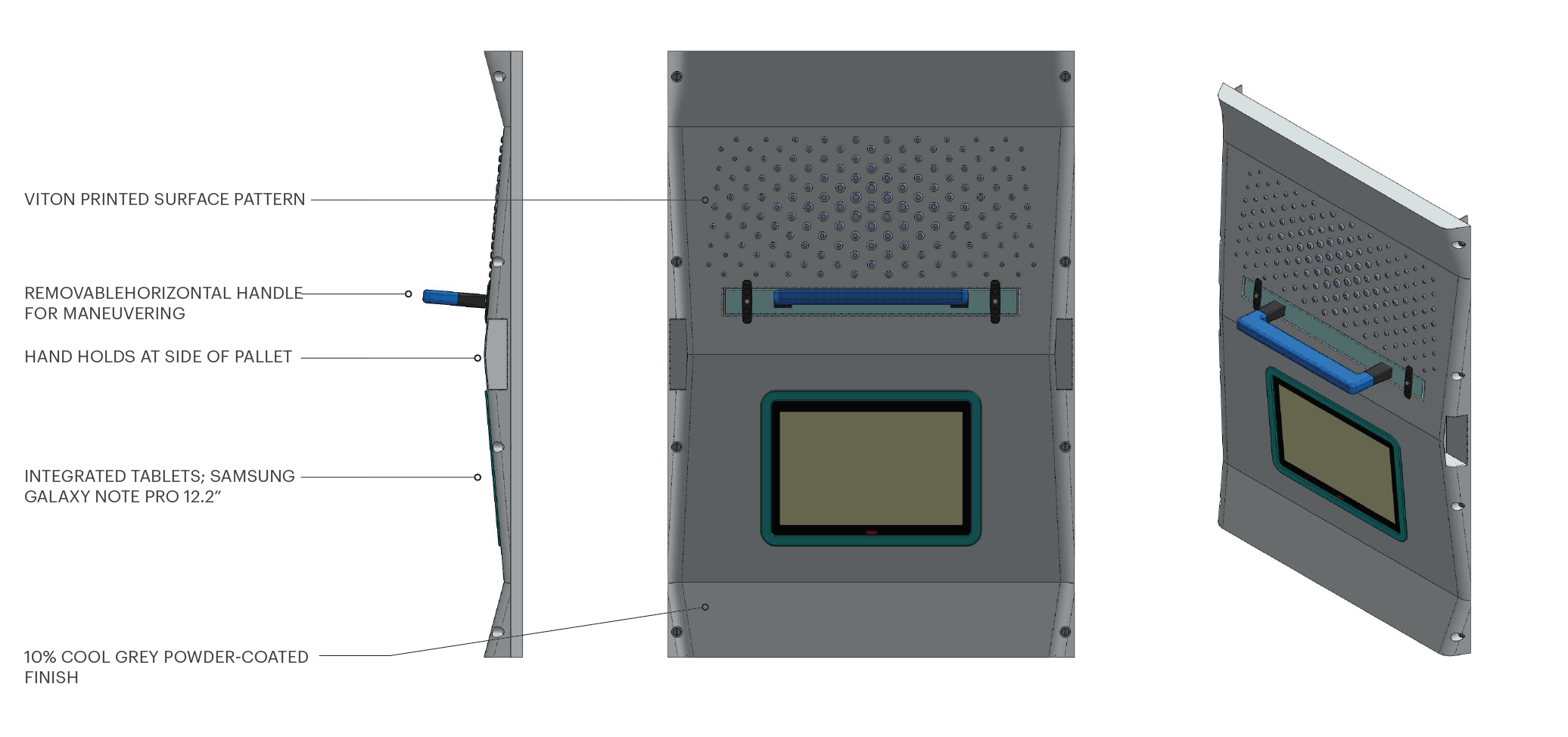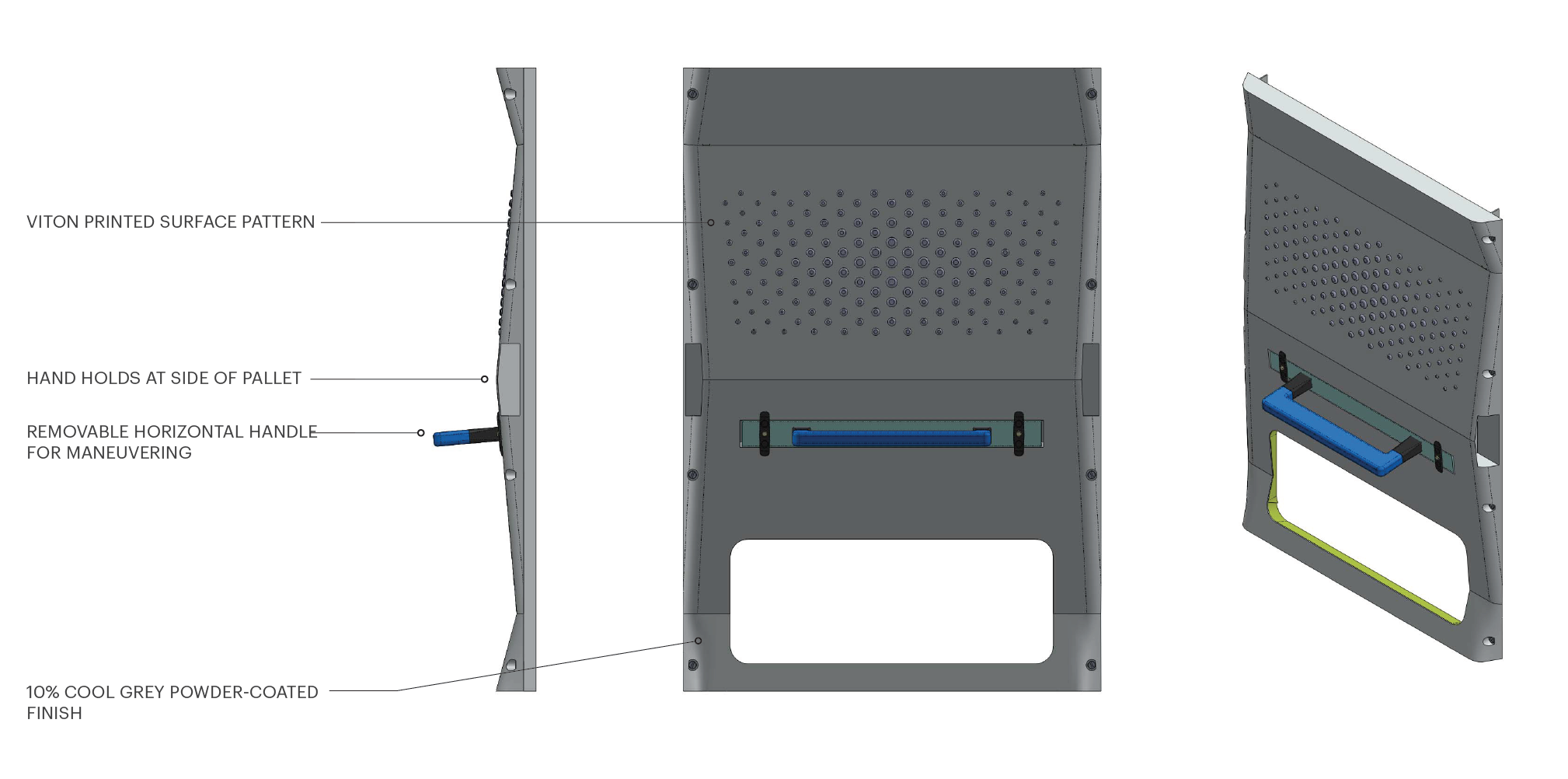UTAS ECLS Universal Pallet Design:
Charrette & Panel Geometry
In 2015 SEArch+ worked with United Technology Aerospace Systems (UTAS / Collins) on the design of their ECLS (environmental control and life support) pallet geometry intended as a universal hardware module for a number of cis-lunar habitat concepts conceived as part of the NextSTEP program. UTAS is the premier hardware provider for ECLS, and were asked by NASA to develop functional prototypes for universal pallet modules containing hardware monitoring temperature and performing waste, water and air remediation..
As a sub-contractor to UTAS, SEArch+ assumed a human factors driven design methodology to address not only the industrial design of the front panel, but also its ergonomics, massing, aesthetics, and the relationship to the larger ship. By synthesizing functional requirements for the pallet design such as ingress and installation within the deployed habitat module, we introduced pallet geometry which not only increased the interior volume of the pallet but augmented it’s mechanical strength as well. We likewise considered how repair and maintenance activities would be conducted with the pallets, which would need to be performed by the astronauts while in zero-gravity. This project was completed by Rebeccah Pailes Friedman, Michael Morris, and Melodie Yashar.
Parameters for Front Panel Geometry
The project began with a Design Thinking Charrette, which took place on December 4, 2017 in Windsor Locks, explored the design needs, requirements, and values relevant to the ECLSS pallet front-panel geometry. The charrette provided a framework for “going broad” in scope and thinking as a means of unveiling key directions, big-picture ideas, values, constraints and shared acknowledgments in the design of the pallet frame, enclosure, human interface, and front-panel geometry. The charrette demonstrated the value of architectural, product, and interaction design thinking when establishing the relationship of the pallet to crew, as well as the pallet to ship.
Charrette Outcomes
● Approach to problem solving from a human-centric perspective yields inclusive results
● Non-linear creative design exercises captured a comprehensive list of design requirements from a diverse teamThe Design Thinking Charrette demonstrated the value of architectural, product, and interaction design thinking in establishing the relationship of the pallet to the crew, as well as the pallet to the ship.
Design Process
Faceting the front panel design functions to provide strength to an ultra lightweight material, creating visual variety, and allowing for acoustical refraction and dampening. The aluminum front panels are projected to be finished in an anti-microbial surfacing to add texture to the habitat environment.
Concept Revisions
• Design of single, universal, removable horizontal handle
• Substitute for perforation pattern within sheet metal
• Representation of pallets within 4-meter ship
• Representation of axial configuration
Capture Features
• Acoustical wall panel on reverse of front panel
• Integrated tablets on every pallet
• Front panel removal and stacking to adjacent panel
• Hand holds at side of pallet
• Concept for changeable lighting per time of day
• Adjustment of faceted design to take better advantage of unused area (aka ‘crescent moon’ shape) within 30.25” max pallet diameter envelope / and 31.5” hatch inner diameter
• Reversed Faceting maintains original aesthetic sensibility in the design while increasing door depth & fitting within diametric envelope









